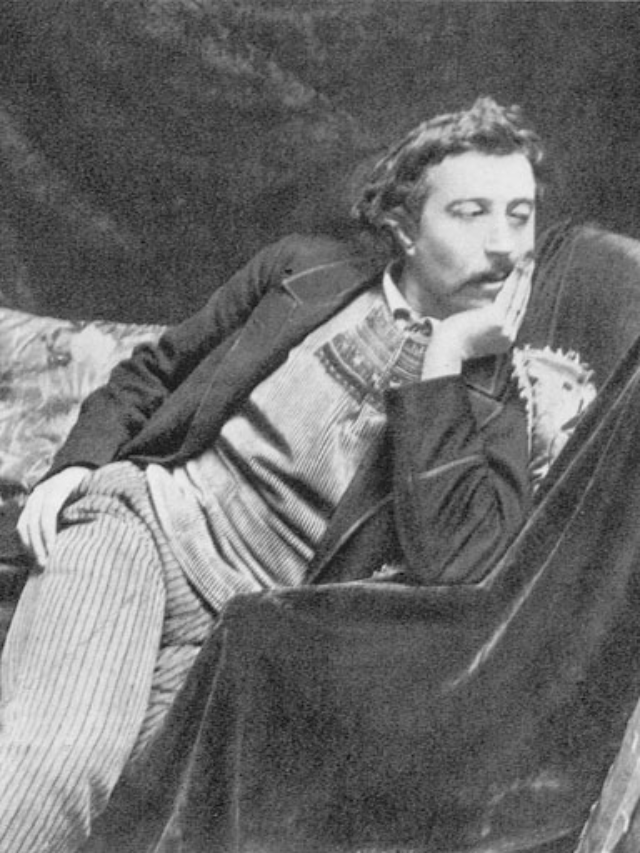We do agree that there exist famed Paul Gauguin cruises, yet they have no relation to the famed Post-Impressionist French painter Paul Gauguin (other than the name), who was born on June 7, 1848. A Parisian stockbroker with a lucrative income, his life took a turn when the stock markets crashed. Frantically looking for an alternative, his fascination with the art world and his desire to become an artist himself grew. However, his innocent fascination was met with a clash from his family. Eventually, painter Paul Gauguin left his family and settled in Denmark. He made a return to Paris to pursue the arts full-time. This initial period was one of struggle but he met many upcoming artists such as Camille Pissarro and Paul Cezanne and became thick friends with them.
One of the most famous associations that Paul Gauguin made was with Vincent van Gogh. The two had a particularly close, yet turbulent, friendship and it is said that van Gogh cut his ear off after an argument with him. The two never met again even though they resumed contact and frequently wrote to each other.
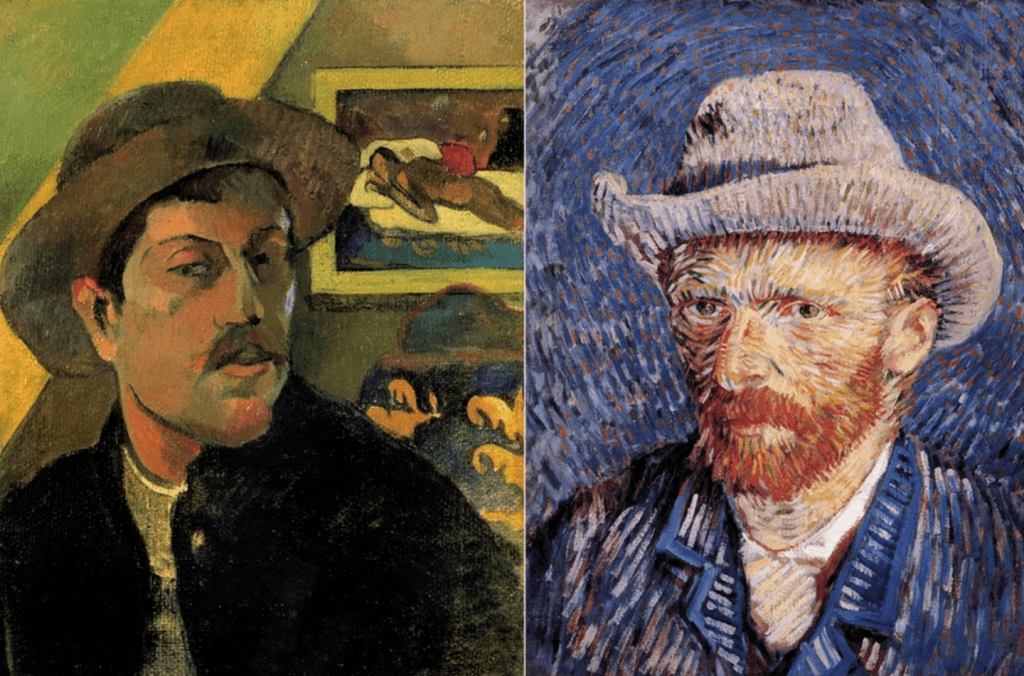
French painter Paul Gauguin was an important figure in the Symbolist movement as a painter, sculptor, printmaker, ceramist, and writer. While he did not gain critical acclaim during his lifetime, he shot to fame after his death, partially from the efforts of dealer Ambroise Vollard, who organized exhibitions featuring notable Paul Gauguin artworks late in his career and assisted in organizing two important posthumous exhibitions in Paris. Paul Gauguin is now known for his experimental use of colour and Synthetist style.
Toward the end of his life, Paul Gaugin spent ten years in French Polynesia. The paintings from this time depict people or landscapes from that region. Tahiti, thus, came to be synonymous with Gauguin and many of his paintings from that time are thought to be his most expressive pieces. Gauguin died on 8 May 1903. His work was influential on the French avant-garde and many modern artists, such as Pablo Picasso and Henri Matisse.
Paul Gauguin Artist Style
His art is characterized by its vibrant colours, simplified forms, and a departure from realistic depictions. Quintessential Paul Gauguin paintings during his synthetist phase include the use of bright colours in his subject-oriented art. Paul Gauguin’s fascination with exotic landscapes and cultures is evident in works like “Tahitian Women on the Beach” (1891), where he used a bold and expressive colour palette to capture the lushness and sensuality of Tahitian life. His innovative use of colour and form greatly influenced later art movements, such as Fauvism and Expressionism.
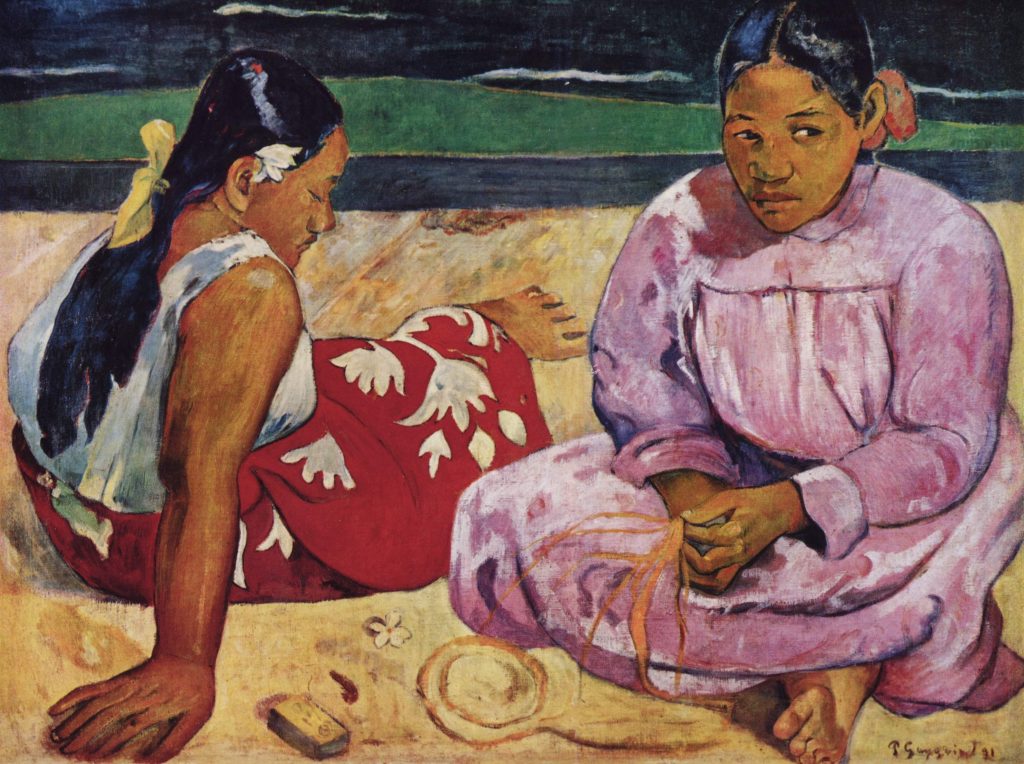
Paul Gauguin also went through an experimental phase, where his painting techniques evolved to thick, expressive brushstrokes, creating a textured surface that added depth and dimension to his canvases, for example, ’The Yellow Christ’ (1889). He used bold and sculptural forms with extremely heavy outlining. In some of his work painter Paul Gauguin frequently incorporated unconventional materials, such as the use of cloisonné-like borders in his Tahitian paintings. This technique comprised of outlining different coloured areas with dark lines, a method inspired by Japanese woodblock prints.
Paintings By Paul Gaugin
During his career, French artist Paul Gaugin created over 500 paintings. We have briefly discussed two of the most famous Paul Gaugin art pieces.
Vision After The Sermon
One of Paul Gauguin art works, ‘The Vision After the Sermon’ (1888), is a bright example of his unique style. In the painting, he employed bold, non-naturalistic colours (vivid reds and greens), which convey an almost spiritual and dreamlike atmosphere. The perspective is flattened and is reminiscent of medieval stained glass.
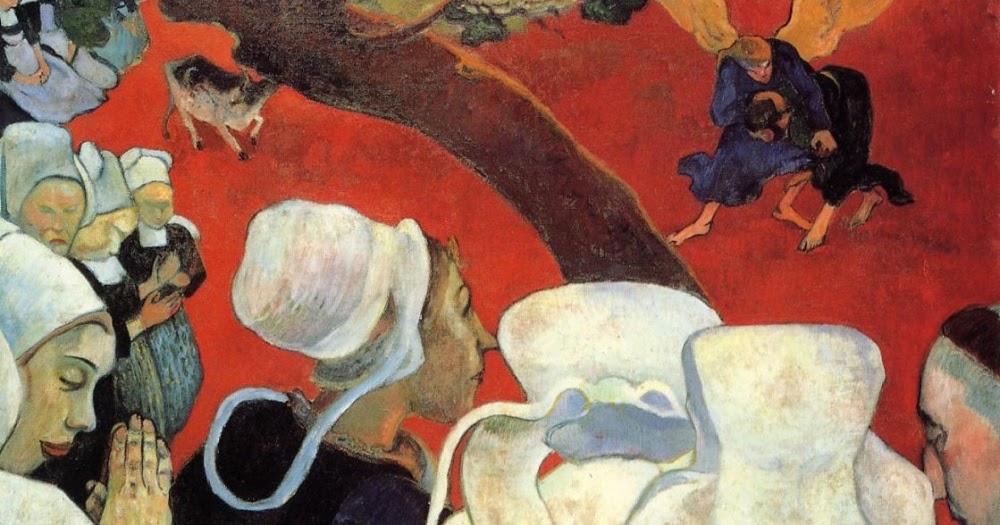
Paul Gauguin Self Portrait
Painter Paul Gauguin’s ‘Self Portrait with Halo and Snake’ was painted in 1889 in a post-impressionist style. It captures his enigmatic and introspective demeanour. The painting employs bold colours and symbolic elements. He carries a sombre expression, wearing a halo and surrounded by apples and a snake. This may signify his desire to be unionised with the primitive; the unrestricted; and the endless nature. It may also be a symbol of the ‘Garden of Eden’; a tussle between two formidable forces. The red and yellow background intensifies the emotional impact of the work. The colours, although muted, still evoke the psyche.
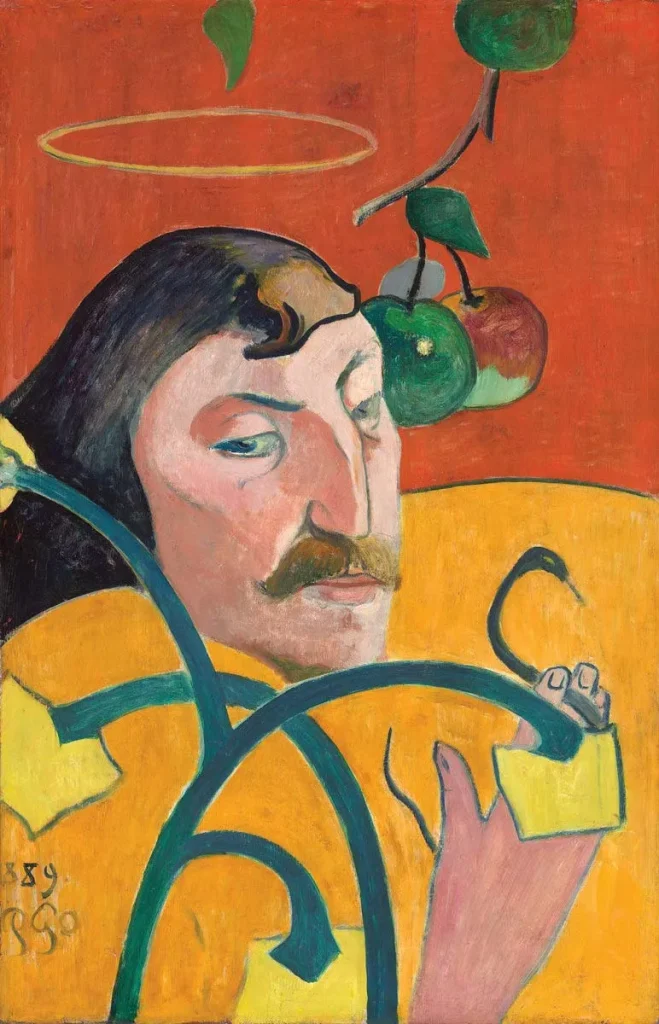
Image Courtesy – Wikipedia


